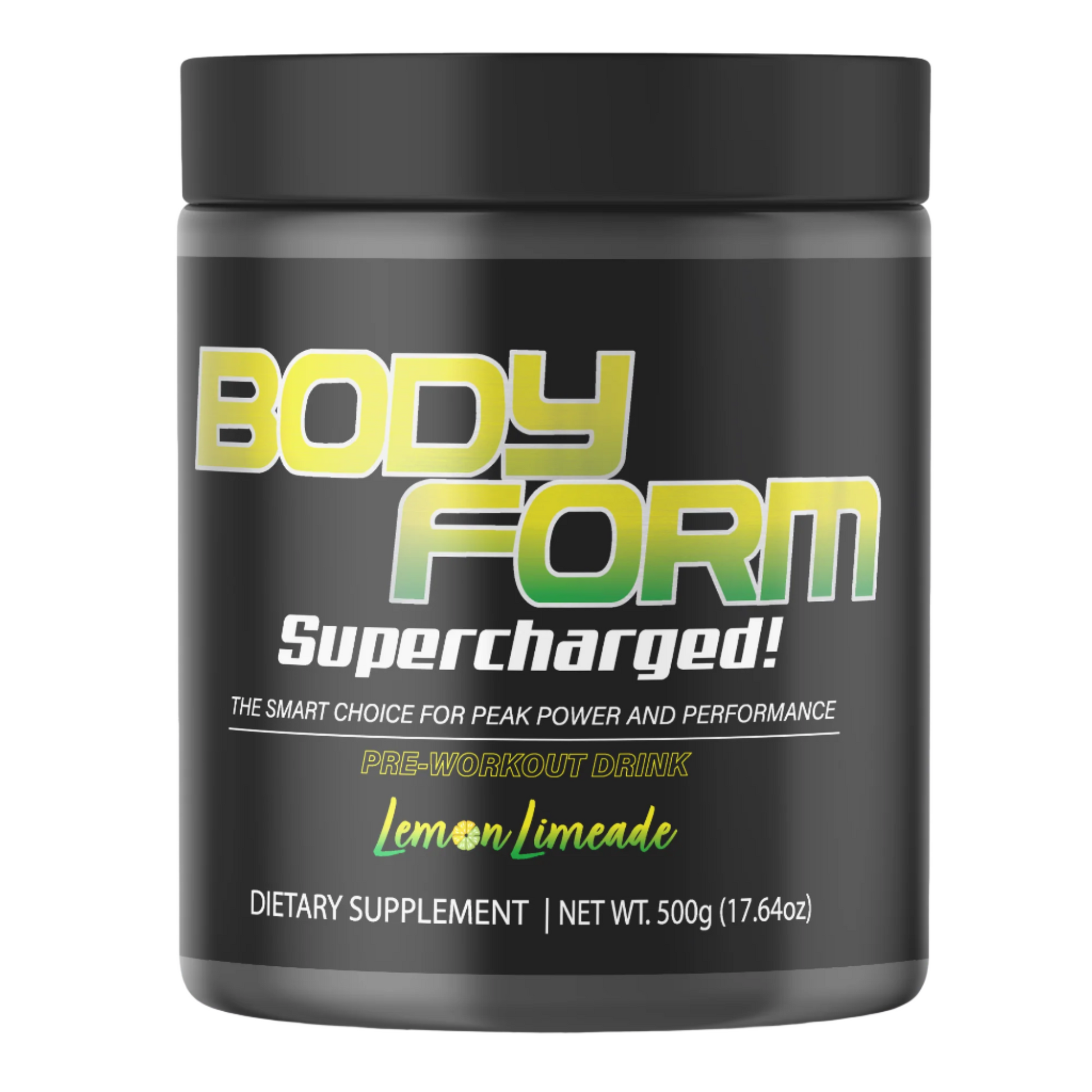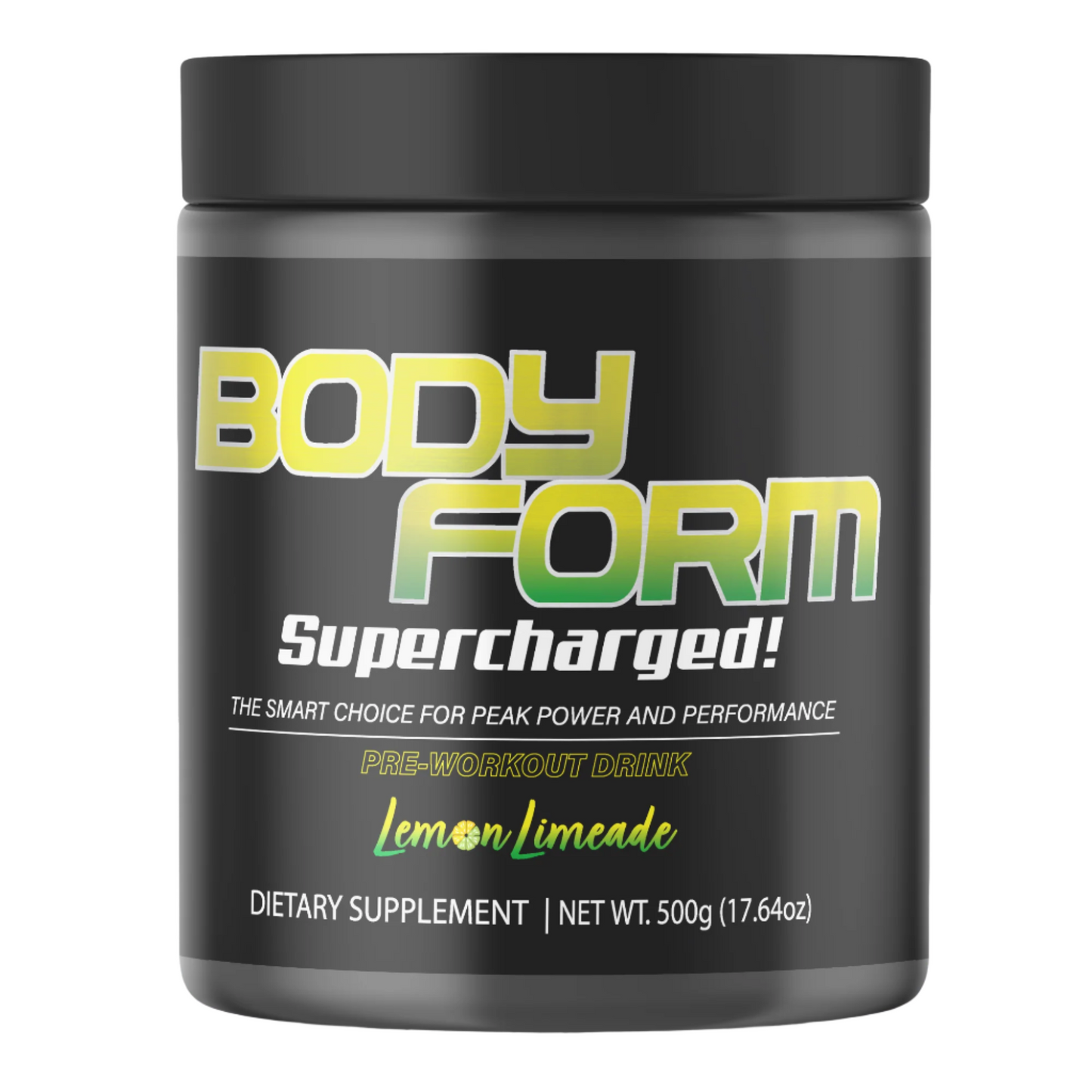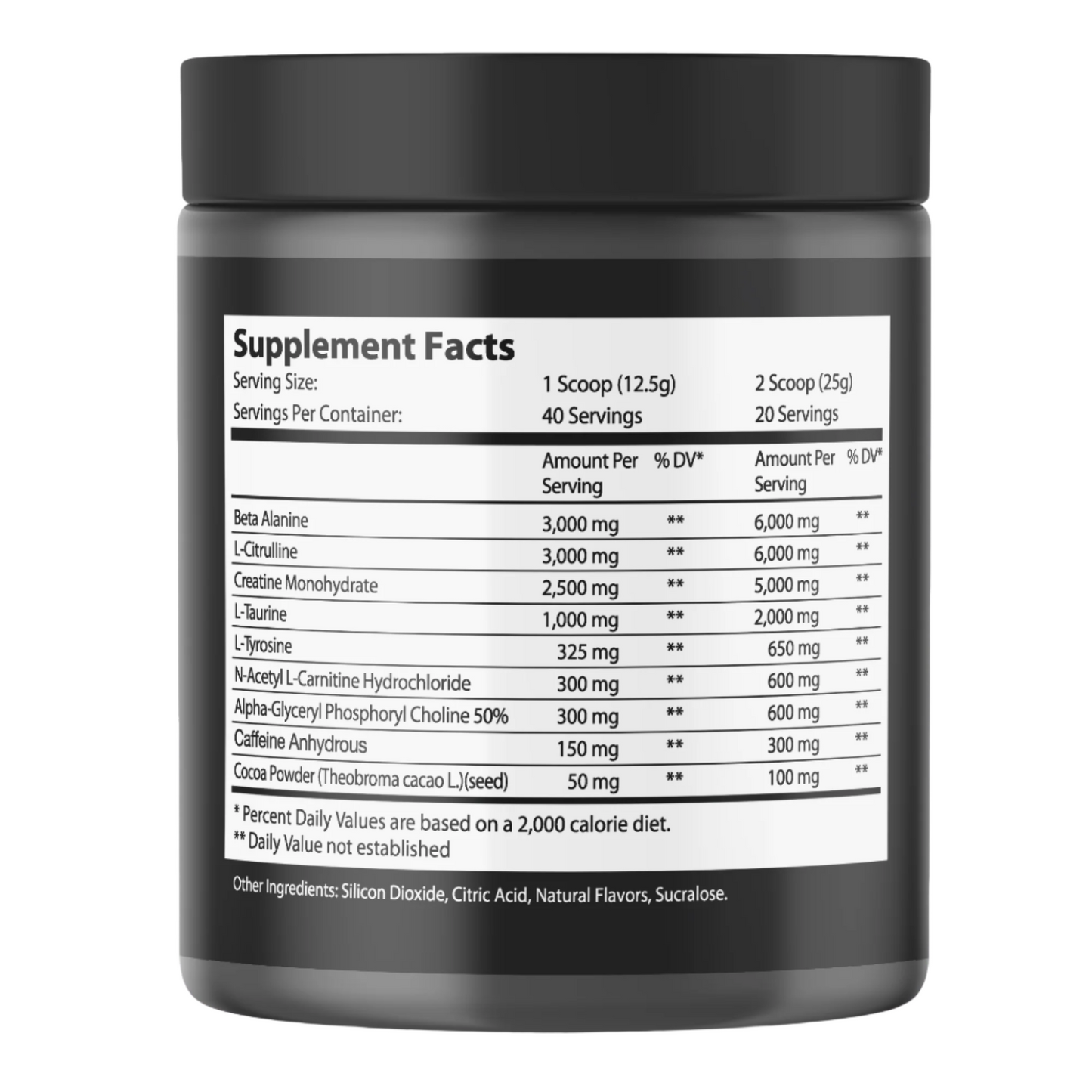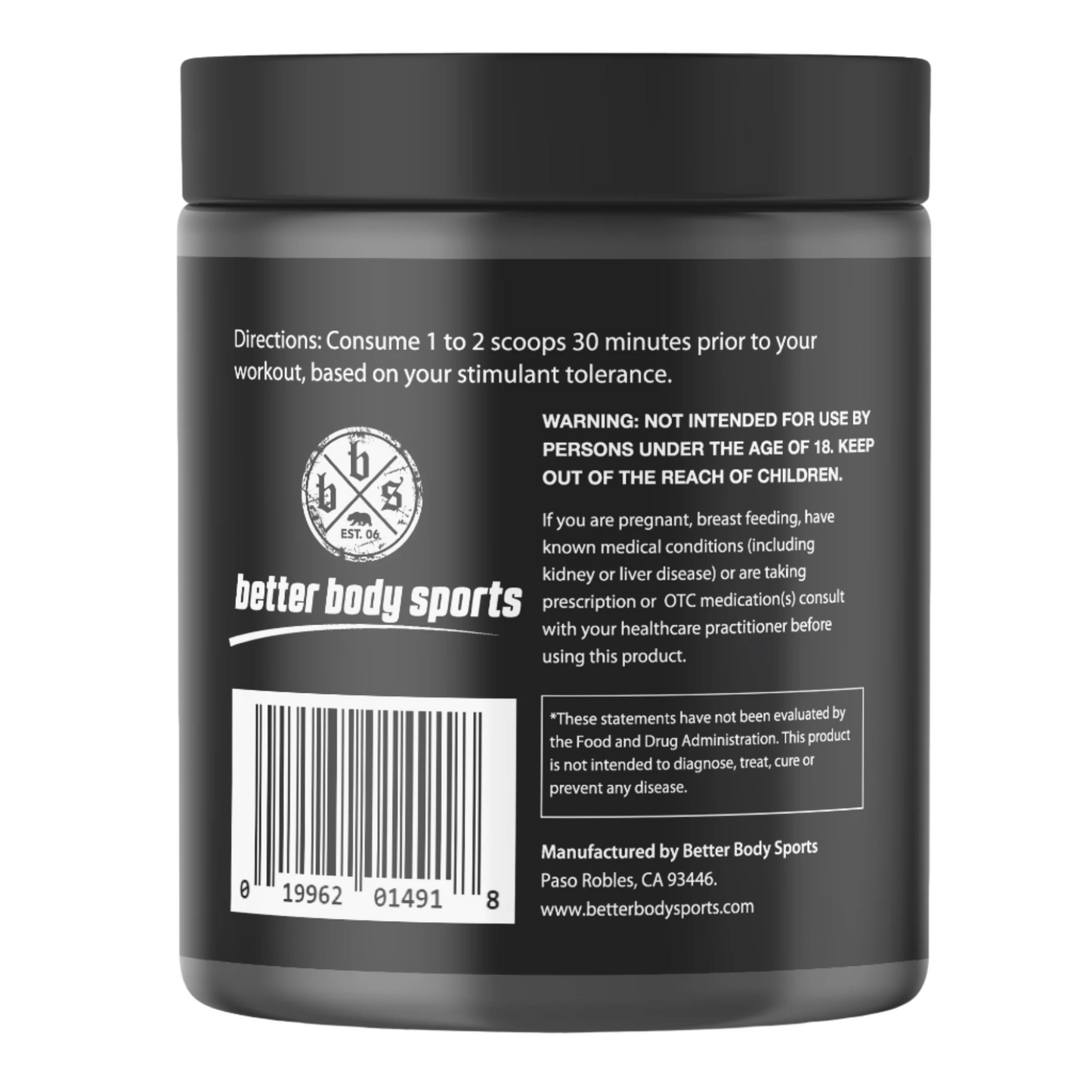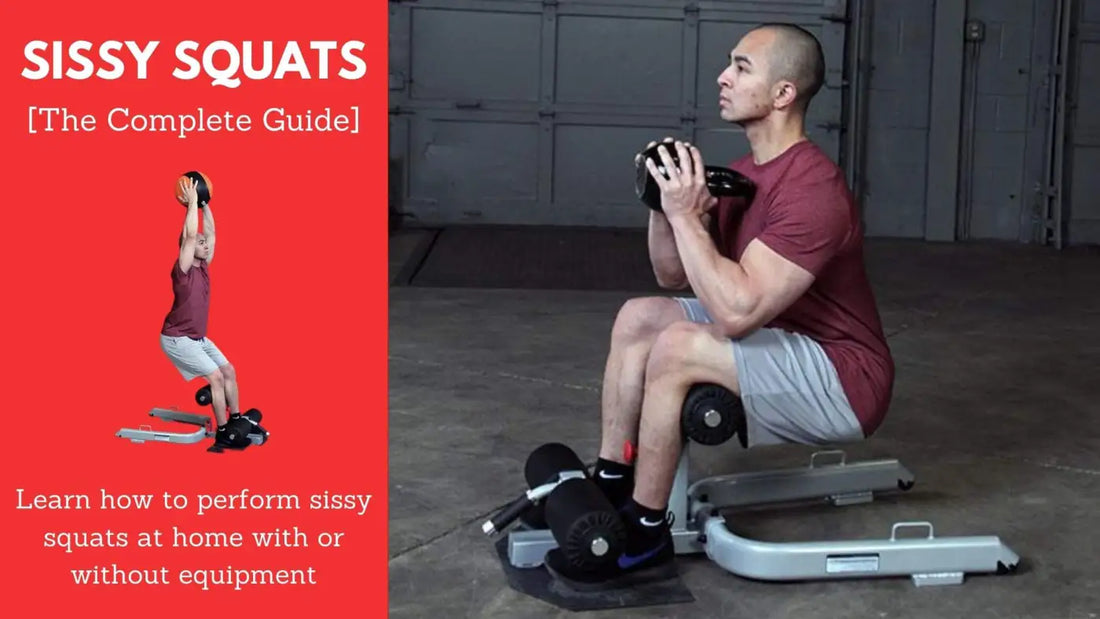
The Sissy Squat Complete Guide
Share
In the quest for bigger muscles, a serious lifter looks for ways to pump blood and exhaust a muscle. While this may be a simple task for upper body exercises, isolation exercises are more difficult for the legs.
But where there is a will, there is a way. Gym goers manipulated exercises such as the traditional squat to focus on one muscle more than another. One such example of this is the sissy squat.
What is a Sissy squat?
The sissy squat is an exercise that places the emphasis of the resistance on the quad muscles. By shifting the weight forward, the pressure stays on your quadriceps throughout the entire movement. Other than the leg extension, there is not another lower body exercise that isolates the quadriceps.
Sissy squats counterbalance the body by keeping the legs forward and the upper body leaned back. This prevents the heels from driving into the ground, which activates the hamstring and glute muscles.
We can use this exercise solely with bodyweight or can use resistance by adding a weight vest, resistance bands, or dumbbells. Over time, you can develop serious strength with this exercise.
Are Sissy Squats A For You?
The answer to this question will depend upon your current physical condition, flexibility and muscular distribution.
Required Range of Motion For the Sissy Squat
The Sissy Squat Requires your body to move in a not so natural way. If you have poor range of motion in your ankles, quadriceps, and lower back, and shoulders. For this reason, you may have trouble with the versions of this exercise where you do not use a sissy squat machine.
More Intense Knee Pressure With the Sissy Squat
Those who suffer from knee pain should also wait to perform sissy squats until pain free or their medical professional has cleared them to perform this exercise. Like a leg extension machine, it places more pressure on the front of the knees during this movement.
Muscular Requirements of the Sissy Squat
Because many people suffer from weak hamstrings and glutes, it makes sense to prioritize bringing those muscles up before adding quad muscle specific exercises.
You Are Clear to Start Your Set.
If you have checked the box on these three concerns with a clean bill, then you are safe to perform the sissy squat. However, using too much weight too soon can lead to an injury even with those who meet the criteria. The sissy squat is not an exercise that requires a lot of weight, especially when learning the movement. After a few sets, your muscles will feel on fire even when it is a bodyweight exercise.
Sissy Squat Variations
Since sissy squats have been around for many years bodybuilders and companies have found new ways to perform the exercise. All of them will have their own benefit and create a unique muscle stimulus, but they serve the same purpose.
The Bodyweight Sissy Squat on Toes
The original way to perform a set of sissy squats is by standing on your toes and squatting down. This version requires a good amount of stability to keep from falling over. We can reduce the balance requirement by holding an object such as a squat rack, but this eliminates your ability to add free weight resistance. You will not be able to hold weight in both hands and will be dependent upon a weight vest for even distribution.
The best way to perform this exercise is to use a calf block or place your heels on a few weight plates that will not move. This way you don’t have to focus on keeping your heels off of the ground.
How to Sissy Squat on Toes
Since the sissy squat exercise requires balance, begin by using the calf block or weight plate. It is best to learn the exercise without so many moving parts.
- Start by placing your feet shoulder width apart with your toes either straight or slightly pointed out.
- Retract your shoulders by pulling them down and back with your chest pointed up.
- Contract your abs and glutes to help maintain posture throughout the movement.
- Bend your knees, ensuring that they shift forward but do not fall inward.
- Let your back “fall” as you continue lowering your body making sure to that you do not crunch to compensate. Depending on your flexibility, you should stop when you are between 10 and 11 on the clock.
- Once you reach the bottom of the movement, press the balls of your feet into the ground.
- Push your legs back up to the starting position making sure your knees do not collapse inward.
While the sissy squat will not build your core, you will need core strength to execute the movement properly. If you do not have enough core strength, you can drop your heels to the ground before pushing back up to the starting position. This is a great way to get acclimated to the exercise.
The Smith Machine Sissy Squat
If you have a smith machine then you can create a modified version of a sissy squat machine. This version allows the point behind the knee to help stabilize you as you sit down and back. It is helpful to use a bar pad on the smith machine to make the exercise more comfortable.
Having someone to hold your feet in place will further help stabilize your body so that you can concentrate on the movement. You can slide your feet under heavy dumbbells If you do not have a spotter. The smith machine sissy squat is a different feeling than one where your knees go forward and upper body falls back.
How to Sissy Squat With a Smith Machine
- Place the tops of your calves up against the bar
- Sit down and back until near parallel
- Press your body back up maintaining pressure on the quads.
- Make sure you do not let your hips go forward at the top where you lose tension on the quadriceps muscle
Sissy Squat Machine
Otherwise known as a sissy squat bench, the sissy squat machine became very popular through the covid-19 pandemic. People looking for lower body options for their home gym found the sissy squat to be an affordable way to add variation to their workout. The hyper is correct in that the small cost for this piece of fitness equipment is a great way to sissy squat at home.
The sissy squat machine places your feet underneath rollers and your calves up against a calf pad. This frees up your leg muscles to handle more weight without needing to balance itself. This version gives you the greatest opportunity to build strength when using free weights.
How to Use a Sissy Squat Machine
- Adjust the calf paid, so that it is resting properly against your calves.
- Place your feet into the sissy squat machine so that it locks them into position.
- Squat down and back until you are near parallel
- Make sure you do not let your hips go forward at the top where you lose tension on the quadriceps muscle.
Sissy Squat Alternative Exercises
For those who feel they are not ready for the sissy squat you have a few alternative exercises. However, they are the brutalist of leg exercises because the weight is distributed in front of the body.
- The Zercher squat hammers the quadriceps by placing the weight in front and closer to the midline of your body. This grueling exercises requires serious upper body and core strength as you hold the weight in the crease of your elbows.
- The front squat puts more emphasis on the quads than a barbell squat with the weight on your back. It also requires significant core strength as the abdominals must hold tight to maintain the posture needed to control the weight that sits on the front of your shoulders.
These exercises still require the hamstrings and glutes to be involved so they should be less demanding on the knee joint. However, if you have knee pain, you still need to make sure that these are safe exercises for you to perform.
Building Mass With Sissy Squats
To get the most out of this exercise, you will want to first perform more compound movements, like the barbell squat. The regular squat will allow you to add significantly more weight to create an anabolic response and greater demand on the muscle. With that said, you can build mass with the sissy squat by making it an accessory exercise.
Make sure the weight is heavy enough where you come near failure with your set. At first this may be difficult as you become accustomed to the movement but start adding resistance as you get comfortable.

